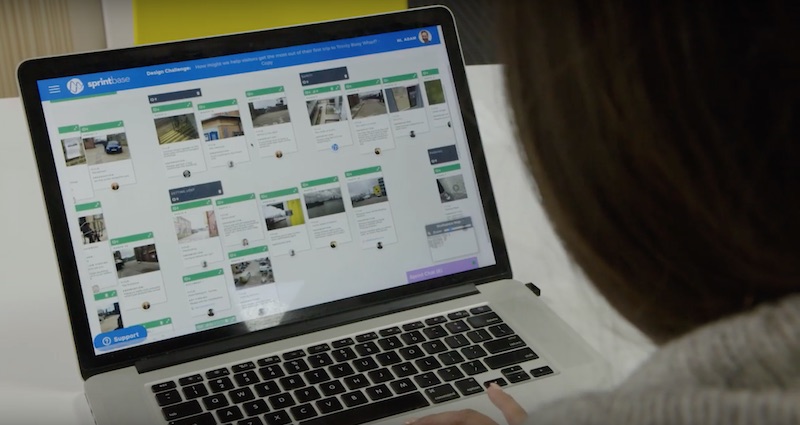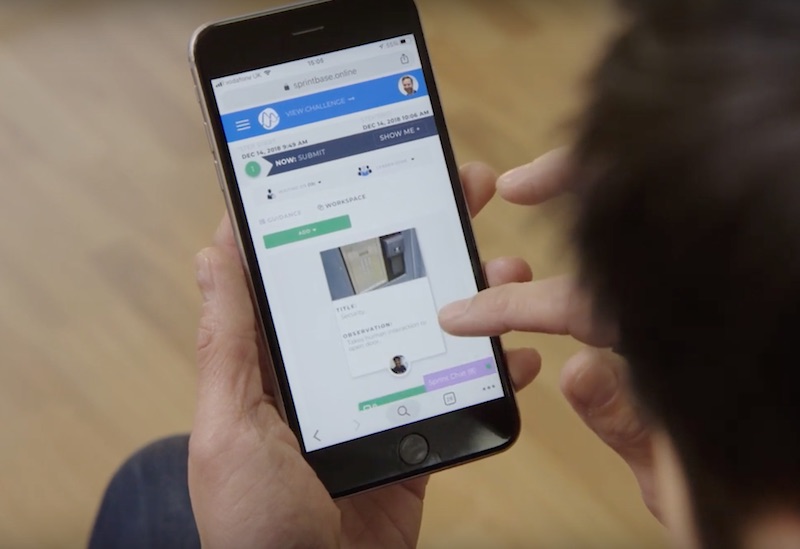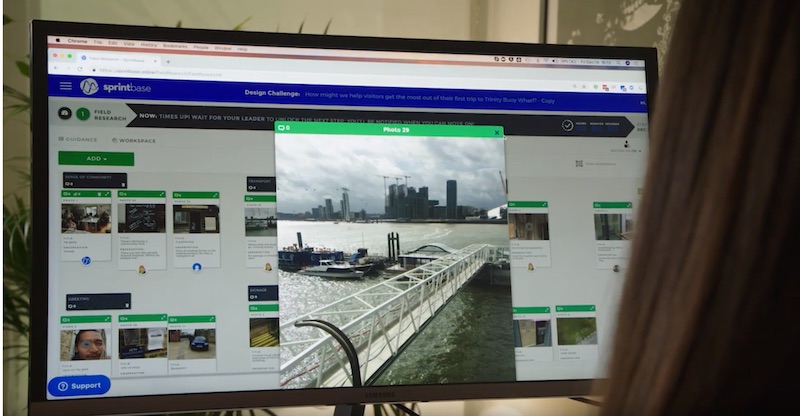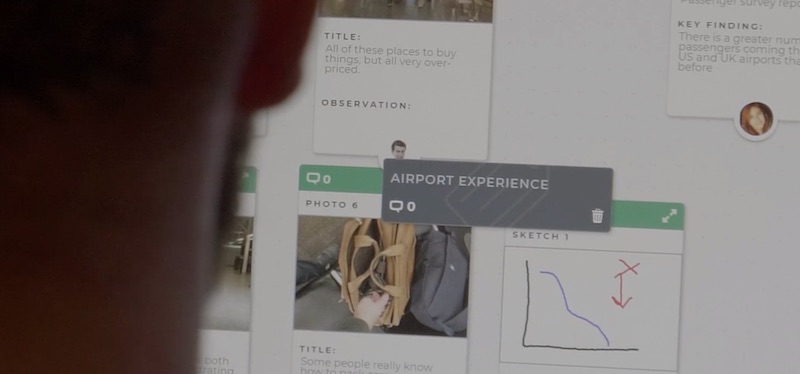This is a guest article written by Sprintbase.
Businesses everywhere are having to evolve at the speed of light to keep up with the pace at which customer needs are changing as a result of the COVID-19 pandemic. Innovation has always been an essential part of any organization’s toolkit, and this situation has highlighted just how important it is to survival during unprecedented times. At Sprintbase, we help businesses bring remote teams together to tackle the challenges they’re facing remotely using design thinking to find truly innovative solutions.
Here we share five reasons why now’s the time to bring your team together for a remote design thinking project.
1. Invest in innovation now, outperform your peers in the long term
This crisis has shown that businesses that can adapt at speed to their customers’ needs are the most able to not only survive but thrive in this environment.
Research by McKinsey & Company found that organizations that maintained their focus on innovation during the 2009 financial crisis emerged stronger. Not only that but they outperformed the market average by more than 30 percent, and continued to deliver accelerated growth in the following three to five years.
We’ve seen organizations which have come up against entirely unexpected problems turn to innovation to help them find solutions, and spot opportunities that have led to exponential growth, even in this climate. This included businesses which suddenly became inaccessible to customers forced to stay home, having to find new ways to reach their audiences. We’ve also seen universities which can no longer teach their students in physical classrooms having to move their entire curriculum online.
Such dramatic pivots can feel unnerving for organizations which, before this crisis, knew who they were and how to be successful in their field. But in a changing world, innovation is not only advisable, but essential to sustainability.
2. There’s no point waiting for everybody to return to the office – because they’re not going back

Remote working is here to stay. The level to which teams will work from home or out of the office will vary, but if there’s one thing this crisis has taught us, it’s that teams don’t need to be in one place to get stuff done. In fact, in many cases, people can achieve more when they work more flexibly.
The McKinsey & Company research found that every industry it surveyed had reduced its focus on innovation, except in pharmaceuticals and medical products, where they saw an almost 30 percent increase in the immediate focus on innovation.
Whilst it’s difficult for organizations to find the right balance between managing the day-to-day reality of navigating a crisis and making space to innovate through it, it’s essential that they do.
Leaders wanting to take their businesses forward and keep adapting to meet changing consumer demands need to get comfortable with innovating remotely. Making remote innovation activities as much a norm as working from home and Zoom calls prevents the risk that you’ll miss the boat because you’re waiting for a ‘normal’ to return that’s never going to come.
Colleagues don’t need to be in the same country, let alone the same room, to run innovation projects. Teams can work online as a group and individually – contributing at the times that work best for them – to develop real, informed solutions you can put into practice now.
Bringing teams together online is not only possible but practical – you don’t need to worry about costly flights, meeting rooms and catering for big group projects. All you need is an internet connection and a shared understanding of the problem you need to solve, and you’re away.
3. You’ll give colleagues the skills they need to capture new growth opportunities in the long term
Depending on your industry, the global health crisis could present huge opportunities for growth. But first you need to be ready to spot them.
Great virtual design thinking projects don’t only help you find actionable, game-changing solutions to your problems, they also help your team develop long term innovation capabilities that enable them to identify growth opportunities in the future.
Going through the design thinking process – speaking to customers about what they want, forming insights, brainstorming new ideas, developing and iterating prototypes using feedback – will give teams skills they can apply to any challenge they face in the future, making the process of encountering and resolving problems innovatively from anywhere a key part of your business as usual.
4. You can bring the best people together from across the business to tackle your most pressing challenges straight away

One of the great things about having everybody working remotely is that your A-team is only the click of a button away. Forming a team for a remote design project doesn’t have to be governed by org structures or who’s in which office – you can pull together the best people to take on the challenge at hand as a remote project team.
And beyond the core design team itself, you can also involve anybody else you’d like to act as observers or to give feedback on the ideas the team has come up with. With virtual innovation projects, people can drop in at times that suit their schedule – contributing their views and experience without significantly eating into their working day.
5. Take the opportunity to make changes informed by what your customers want now
Among executives from 200 organizations surveyed by McKinsey & Company, more than 90 percent said they expect the fallout from COVID-19 to fundamentally change the way they do business over the next five years – and 85% said they’re concerned that the crisis will have a lasting impact on customers’ needs and wants during this time.
With customer demands continuing to shift as the reality of this pandemic continues to unfold, it’s more important than ever that organizations take the opportunity to speak to their customers about how they can better meet their needs.
As design thinking is all about developing ideas that meet customers’ needs, running a design thinking project is the ideal way to resolve business problems by finding solutions your target audiences want.
It’s easier than ever to reach customers at the moment. With the majority of people working from home, you can arrange calls and virtual focus groups online quickly and easily, and come away with invaluable insights in no time at all.
Not only does this save you the money you’d ordinarily have to spend on venues and catering, but it also saves you time and gets you hot off the press information about what your business needs to do to stay competitive right now.

In this unpredictable environment, organizations can’t afford to stand still. Working remotely doesn’t need to be a barrier to finding creative solutions to the challenges your business is facing. In fact, we’ve seen teams achieve even more incredible things virtually than they can face-to-face, thanks to the flexibility virtual projects bring.
To find out how you can bring your remote team together to find solutions to your organization’s problems that don’t just secure your business, but expand it, visit sprintbase.io and get in touch.
Want to amplify your innovative impact in just 15 min? The Innovation Impact™ assessment is a new academic research-based learning and assessment tool that helps teams quickly identify the specific behaviours that will lead to improved innovation results as well as tap into the diversity of strengths on their team. Click here to take the assessment.
